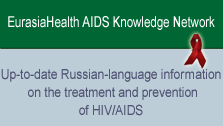Resources for Health Professionals and Patients
| Candidiasis and HIV | |
Attached file: |
 (Russian, 572.4 kb)
Candidiasis and HIV
(Russian, 572.4 kb)
Candidiasis and HIV
|
Link to document(s) | http://hivinsite.ucsf.edu/I... |
Author(s): | C. J. Fichtenbaum, J. A. Aberg. |
Document type: | Monographs, Reports, and Book Chapters |
Language: | English, Russian |
Original language of document: | English |
Primary area(s) of focus: | HIV/AIDS, Tuberculosis |
Secondary areas of focus: | Opportunistic infections (OIs) |
Submited by: | Victor Stanilevskiy |
Date of entry: | June 20, 2006 |
Pages: | 39 |
| Mucocutaneous candidiasis occurs in 3 forms in persons with HIV infection: oropharyngeal, esophageal, and vulvovaginal disease. Oropharyngeal candidiasis (OPC) was among the initial manifestations of HIV-induced immunodeficiency to be recognized and typically affects the majority of persons with advanced untreated HIV infection. Presenting months or years before more severe opportunistic illnesses, OPC may be a sentinel event indicating the presence or progression of HIV disease. Although usually not associated with severe morbidity, OPC can be clinically significant. Severe OPC can interfere with the administration of medications and adequate nutritional intake, and may spread to the esophagus. Esophageal candidiasis remains one of the most common opportunistic infections in countries where combination antiretroviral therapy (ART) is a routine part of the standard of care. Vulvovaginal candidiasis is an important concern for women with HIV infection, although the relationship of vulvovaginal candidiasis to HIV infection remains unclear. In resource-poor nations, mucocutaneous candidiasis is a formidable problem. Despite the frequency of mucosal disease, disseminated or invasive infections with Candida and related yeasts are surprisingly uncommon. | |
Overall user rating: | Not yet reviewed |

 Print-friendly View
Print-friendly View

